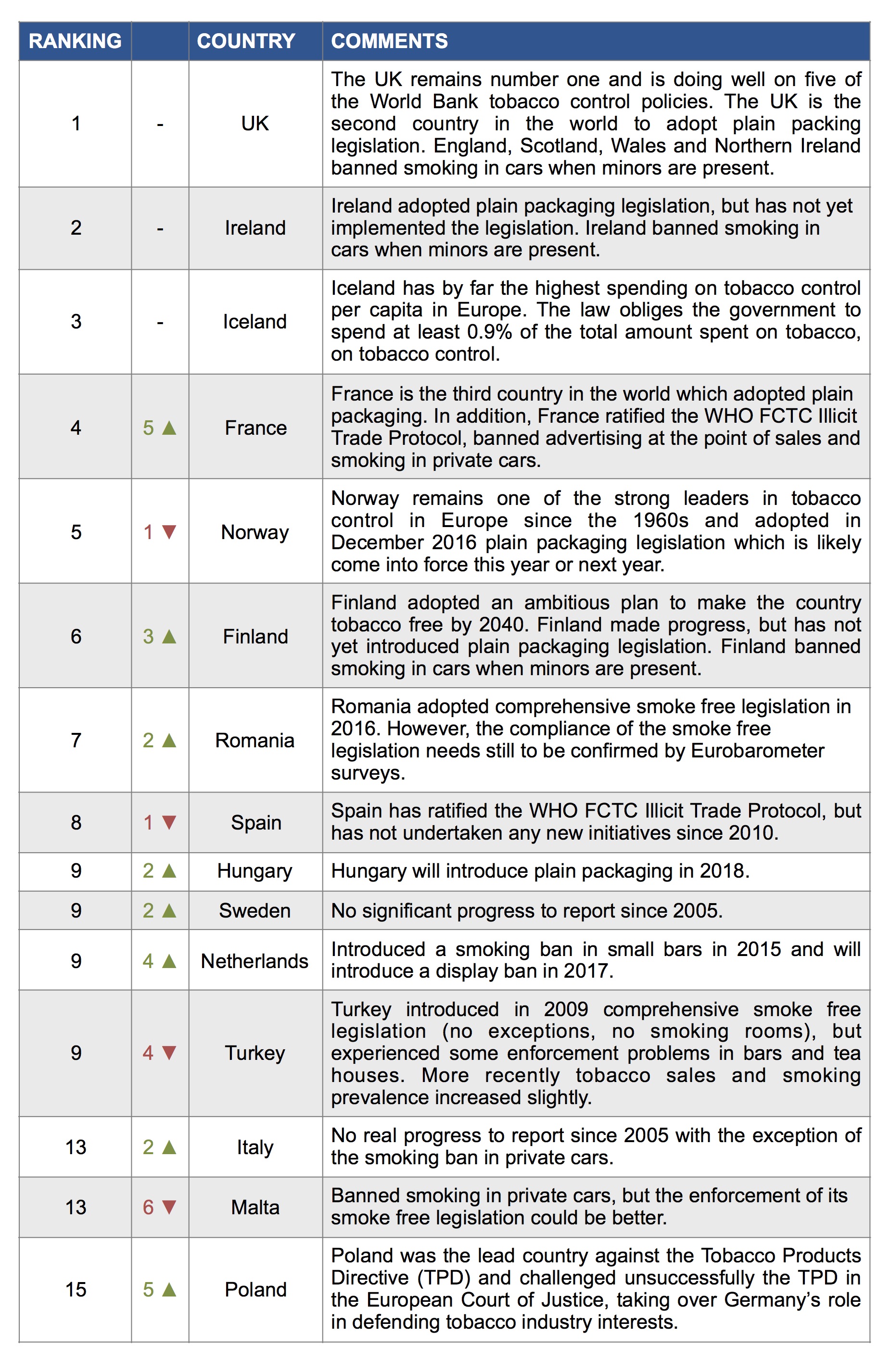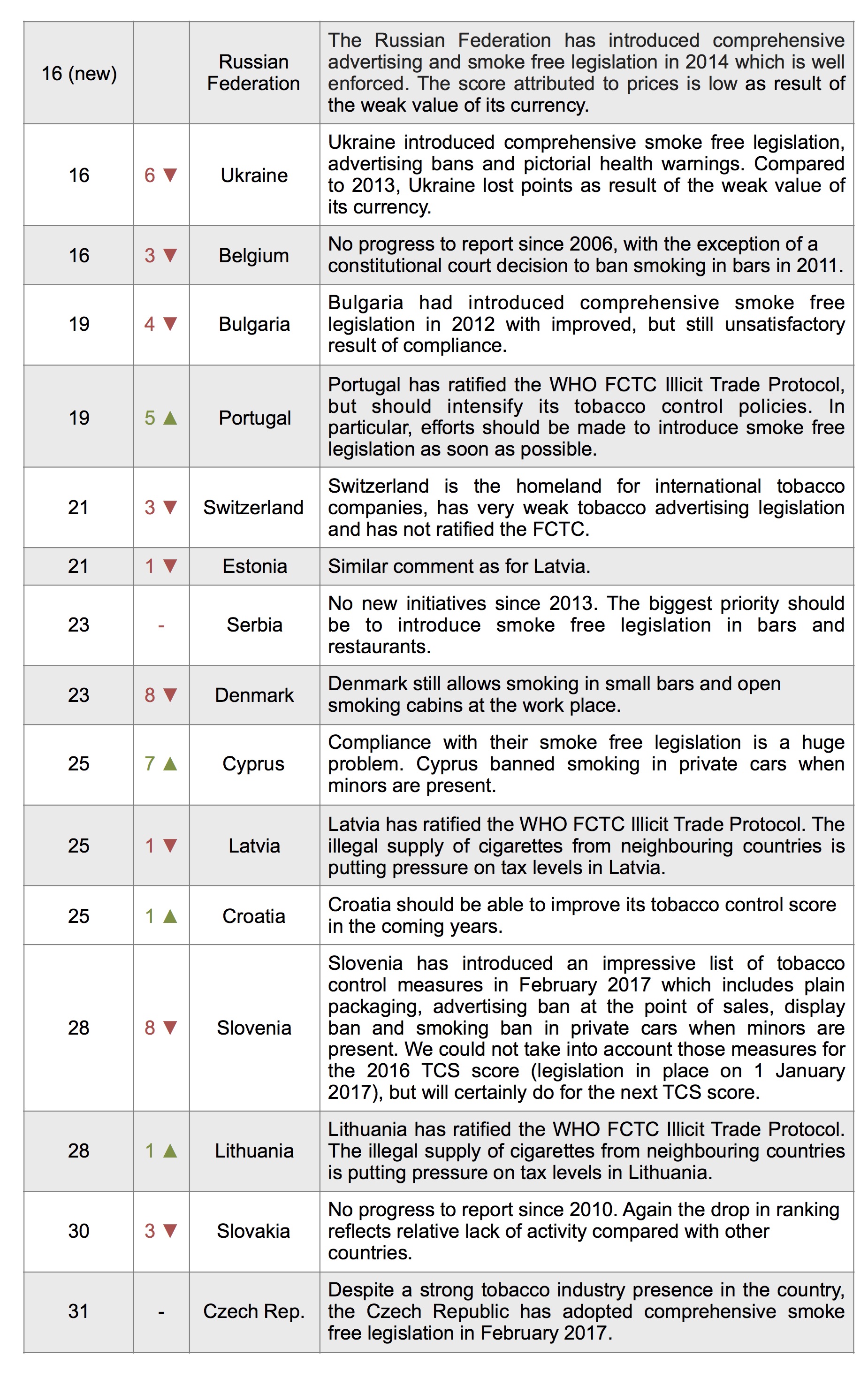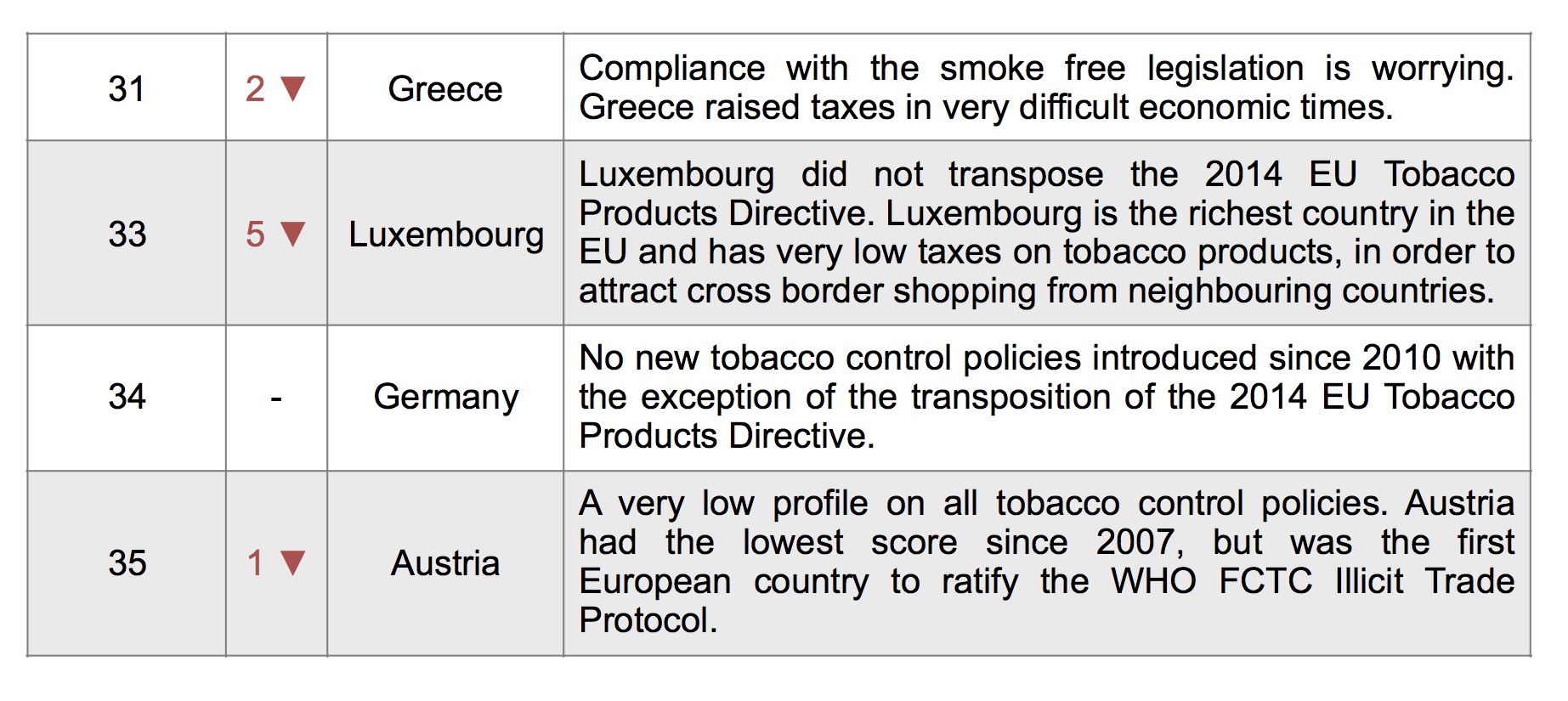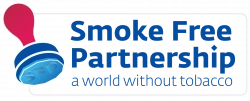COMMENTS AND KEY PROVISIONS
The Tobacco Control Scale 2016 in Europe
The Russian Federation was included in our survey for the first time and was doing well in advertising restrictions and smoke free policies. Overall, countries which failed to undertake new initiatives lost points and fell in the ranking. The countries that are leading tobacco control in Europe are those that have comprehensive tobacco control policies.
Six countries (UK, Ireland, Iceland, France, Norway and Finland) have 60 points or more, nine countries have scores in the 50s (Romania, Spain, Hungary, Malta, Netherlands, Turkey, Sweden, Malta, Poland), and the remaining 20 countries failed to reach 50% of the total score possible.
The EU Tobacco Products Directive (Table 5) obliged EU countries to introduce pictorial health warnings. Six countries (UK, France, Ireland, Hungary, Norway and Slovenia) adopted plain packaging legislation, although only the UK and France had plain packs at the point of sales on 1 January 2017.
Since 2013, nine countries have introduced a smoking ban in private cars when minors are present. (Ireland, UK, France, Finland, Italy, Malta, Cyprus, Lithuania and Slovenia)
Were this a test requiring a minimum score of 50 to pass, then 20 countries, or 60% of the field, would fail. Their end-of-term report would undoubtedly say: “Must do better.” They urgently need to improve their tobacco control score in the next few years.
A major concern is the lack of funding for tobacco control. No country spends 2 euros per capita on tobacco control, with only Iceland coming close. The TCS scores for spending are extremely low and we are seeing reduced funding in several countries.
Comments on individual countries
Here, in slightly end-of-term report style, we comment briefly on individual countries, in reverse order of their 2016 ranking.






The Tobacco Control Scale is partly funded by operating funding from the European Commission to Smoke Free Partnership. The views expressed in this website do not necessarily reflect the official views of the European Union institutions.
Copyright 2022 © All Rights Reserved


